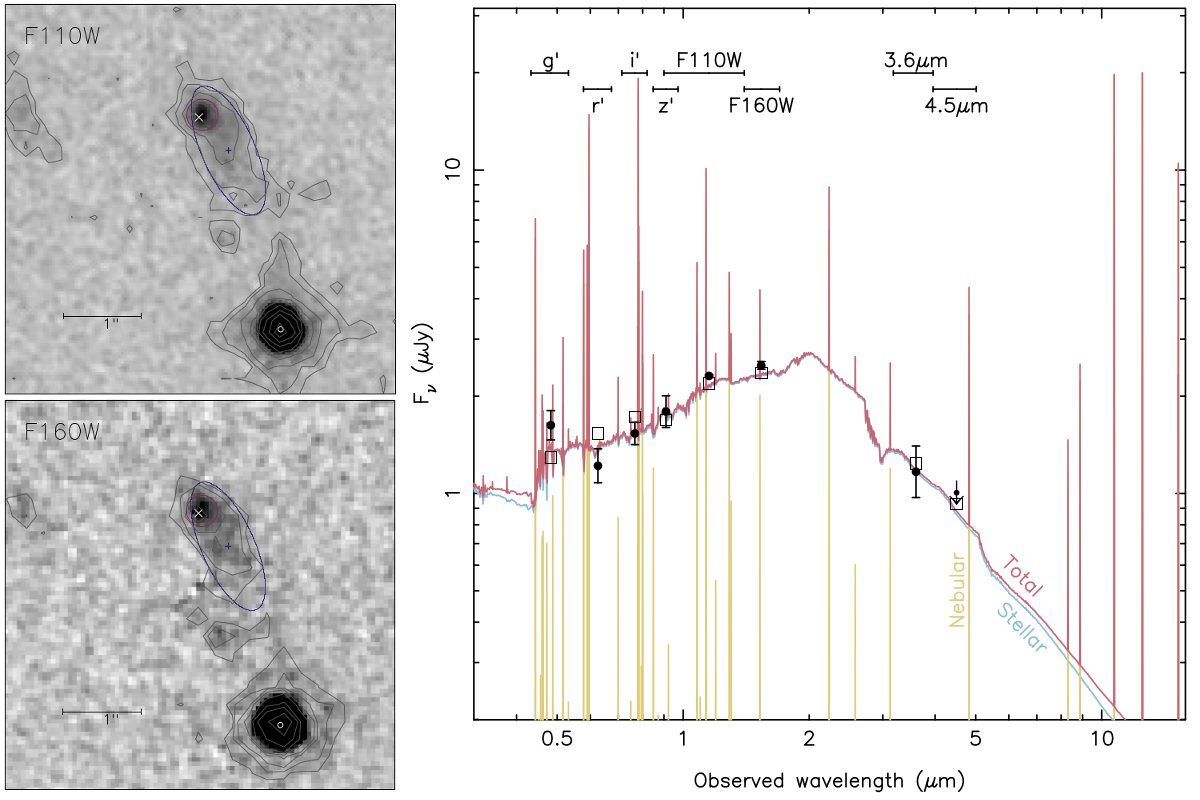Daily Image
07-07-2017Zooming in on the host galaxy of the repeating fast radio burst
| Submitter: | Cees Bassa |
| Description: | At the beginning of this year we presented the localization of the repeating fast radio burst FRB121102. Ground based observations with the 8-m Gemini telescope on Mauna Kea revealed the z=0.193 host galaxy, which displayed strong emission lines of Hydrogen and Oxygen, indicating it is a dwarf galaxy with low-metallicity star formation. Follow-up observations with the Gemini telescope, the Hubble Space Telescope and the Spitzer telescope, reveal that the host galaxy consists of a bright star forming region in the outskirts of the irregular dwarf galaxy. The panels on the left show the infrared (J and H-band) images from the Hubble Space Telescope, where the red circle indicates the star forming region, while the purple ellipse denotes the extent of the host galaxy. The white cross denotes the location of the FRB as measured with the EVN. We find that the FRB is coincident with the star formation region. The multi-band images allow us to constrain the spectral energy distribution, shown in the right hand plot, which constrains the host galaxy mass to 10E8 solar masses, confirming the dwarf nature of the host. The similarity of the FRB121102 host galaxy with host galaxies of hydrogen-poor superluminous supernovae and long-duration gamma-ray bursts suggests that fast radio bursts may be linked to newly born neutron stars or magnetars, as these sources are believed to be born in low-metallicity environments. Our findings have been published in Bassa, Tendulkar, Adams, Maddox et al. (2017, ApJ 843, 8). |
| Copyright: | Bassa, Adams, Maddox, Hessels |
| Tweet |  |
